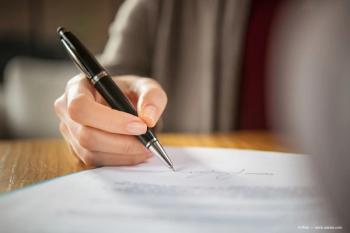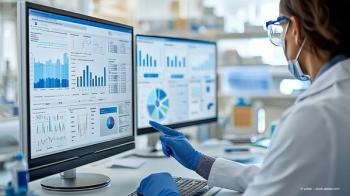
How IPL technology can help grow your practice
For weary patients, dry eye clinics are often the last stop. Here, they finally find the knowledge, understanding, diagnosis, and treatment they deserve. Intense pulsed light (IPL) therapy, an important and practice-differentiating component of treatment, has helped us provide long-term relief from signs and symptoms.
Editor’s Note: Welcome to “
When patients first visit my dry eye clinic, they have been seen by an average of 3.2 other eye-care practitioners in the past 3 years. Clearly, although we now know that dry eye affects millions of people, many of whom are in our practices, patients still are not getting the treatment they need.
For these weary patients, our dry eye clinic is the last stop, where they finally find the knowledge, understanding, diagnosis, and treatment they deserve. Intense pulsed light (IPL) therapy, an important and practice-differentiating component of treatment, has helped us provide long-term relief from signs and symptoms. That success has not only built the dry eye clinic’s reputation, but also turned dry eye disease into our practice’s largest gateway for new patients.
Who chooses IPL
Although dry eye affects many people, we see a strong leading demographic in our clinic. These patients are typically women age 45 and older with higher-than-average education and income. Many are married with children and contribute to the care of a parent or in-law. They have very large social networks of friends and family.
These are the powerful demographics every business wants, but they tell us that’s not how they’ve been treated by the 3.2 other practitioners they saw before us.
Patients say they felt dismissed. They were told this is a normal part of aging. They were handed artificial tears or a treatment that didn’t work. When these patients find our practice, they get our interest, validation, and compassion. Their dry eye isn’t a nuisance; it’s a real disease with real treatments.
We perform a detailed, thoughtful, scientific workup. By taking the same approach we’d take for any other disease, we earn patients’ trust-a trust that’s solidified once they see the benefits of treatment.
IPL has been part of our dry eye toolbox for 10 years, and we’ve had technology (Optima IPL, Lumenis) for 3 years. This system delivers controlled amount of IPL energy in every pulse without energy spikes, making its results comfortable and repeatable.
We use this technology in combination with other treatments for many patients with moderate to severe dry eye (the stages of most patients who have long sought treatment) because it treats inflammation, the underlying cause of dry eye disease. We often use it along with thermal pulsation (LipiFlow, Johnson & Johnson Vision), which liquefies the meibum and clears glands affected by meibomian gland dysfunction (MGD), while Optima IPL breaks the vicious cycle of inflammation that causes MGD.
Explaining IPL to patients
When we talk to patients about IPL, we explain that physicians using the technology for cosmetic treatment of rosacea discovered noted that treatment also improved patients’ dry eye signs and symptoms. We also explain that this IPL technology controls the energy of light delivered in each pulse to treat abnormal blood vessels without damaging the skin. Its constant energy levels and cooled tip mean the procedure has little discomfort or downtime.
It is also important to tell patients why the treatment works. Inflammation changes the character of the meibum, raising its melting point so it remains at toothpaste consistency at body temperature, clogging the meibomian glands. Thermal pulsation can unclog the glands, but IPL has a dual advantage in both helping unclog the glands and treat the inflammation that causes clogging.
We tell patients that they can expect a better tear film, greater comfort and less redness, as well as the added benefit of improved skin tone. We explain that we will be able to measure success objectively with improved ocular surface disease index (OSDI) score, tear breakup time (TBUT), and visibly better glands and meibum secretions.
Acceptance, satisfaction, long-term follow-up
The vast majority of our patients buy into IPL treatment. Once they understand that inflammation is the underlying cause, they see why prior treatments such as artificial tears, or even meibomian gland expression or thermal pulsation alone, did not deliver the results they wanted. The price point is accessible as well.
This IPL treatment is effective and comfortable, which is essential because our patients need to come back for the full series of four treatments, spaced 2 to 4 weeks. We have a very high rate of return.
Older IPL devices had a high initial pulse that was both uncomfortable and potentially damaging to the skin. The head got hotter with each pass, so physicians needed to lower the energy to less effective levels. The Optima IPL delivers fixed energy over 3 pulses, with a very predictable depth and wavelength, and the head is water-cooled for comfort.
Once patients start IPL treatment, they often see and feel dry eye symptoms improve quickly, and they enjoy the side benefits of improved skin tone and color. The satisfaction rate is very high.
After the four initial treatments, I see patients 4 to 6 months later, and then at increasing intervals until we’re doing IPL once per year. We schedule in advance or send reminders, but the patients themselves actually tend to drive the maintenance treatments.
Once they see and feel the effects of IPL, they ask for an appointment the moment symptoms begin to return. Optima IPL is supported by a lot of scientific evidence, but it speaks volumes that patients are calling us for additional out-of-pocket treatments months and years later.
How IPL helps grow the practice
In terms of return on investment, our Optima IPL probably paid for itself within 4–5 months. Beyond that basic metric, this treatment, which is safe and fast and fits easily into our clinic schedule, has helped us build our practice in several ways:
- Exceptional dry eye care – For every dry eye patient who enters our practice, those average 3.2 practitioners missed an opportunity. Our practice can seize that opportunity and deliver compassion, knowledge, and results. This level of service requires a multitude of treatment options and a protocol to best utilize them for great outcomes. IPL is a cornerstone because it treats the underlying cause of dry eye, and the aforementioned advantages of the Optima IPL make it an effective choice.
- Rising IPL volume – When we started doing IPL in 2008, we treated 4 or 5 patients every other week. Today, we do 15 to 20 procedures per week, with the Optima IPL helping increase both new patients and our return rate for the full course of treatment. We also perform IPL on a number of cataract patients to optimize the ocular surface for pre-op biometry and surgery in just 1 to 2 months.
- Aesthetic use – Dry eye brings in so many patients, and once people know and trust us, they often use other services. The Optima IPL can directly help us generate revenue beyond dry eye treatment. Our oculoplastic partner uses the system to treat facial rosacea and vascular legions, as well as for skin rejuvenation and facial hair removal. The same patients get other aesthetic treatments such as injectables as well.
- “Exponential” friends and family – Treating dry eye compassionately and effectively isn’t the same as performing successful cataract surgery. These folks have seen other practitioners who failed them. Patients don’t simply recommend us-they sing our praises. As a result, dry eye has surpassed cataracts to become the largest gateway for new patients in our practice. Folks in that common dry eye demographic group, the women 45 and up with the wide circle of friends and family, know a lot of people who need cataract or LASIK surgery or want skin rejuvenation. From treating a single dry eye patient very well, our practice sees a ripple effect of exponential growth.
Disclosures:
Neel R. Desai, MD, is director of Cornea, Cataract, and Refractive Services at The Eye Institute of West Florida; medical director, Lions Eye Institute for Transplant Research; and president and CEO, Clarity Visionary Consulting. He is a consultant to Allergan, BioTissue, Lumenis, Johnson & Johnson Vision, and Shire.
Newsletter
Don’t miss out—get Ophthalmology Times updates on the latest clinical advancements and expert interviews, straight to your inbox.



















































.png)


